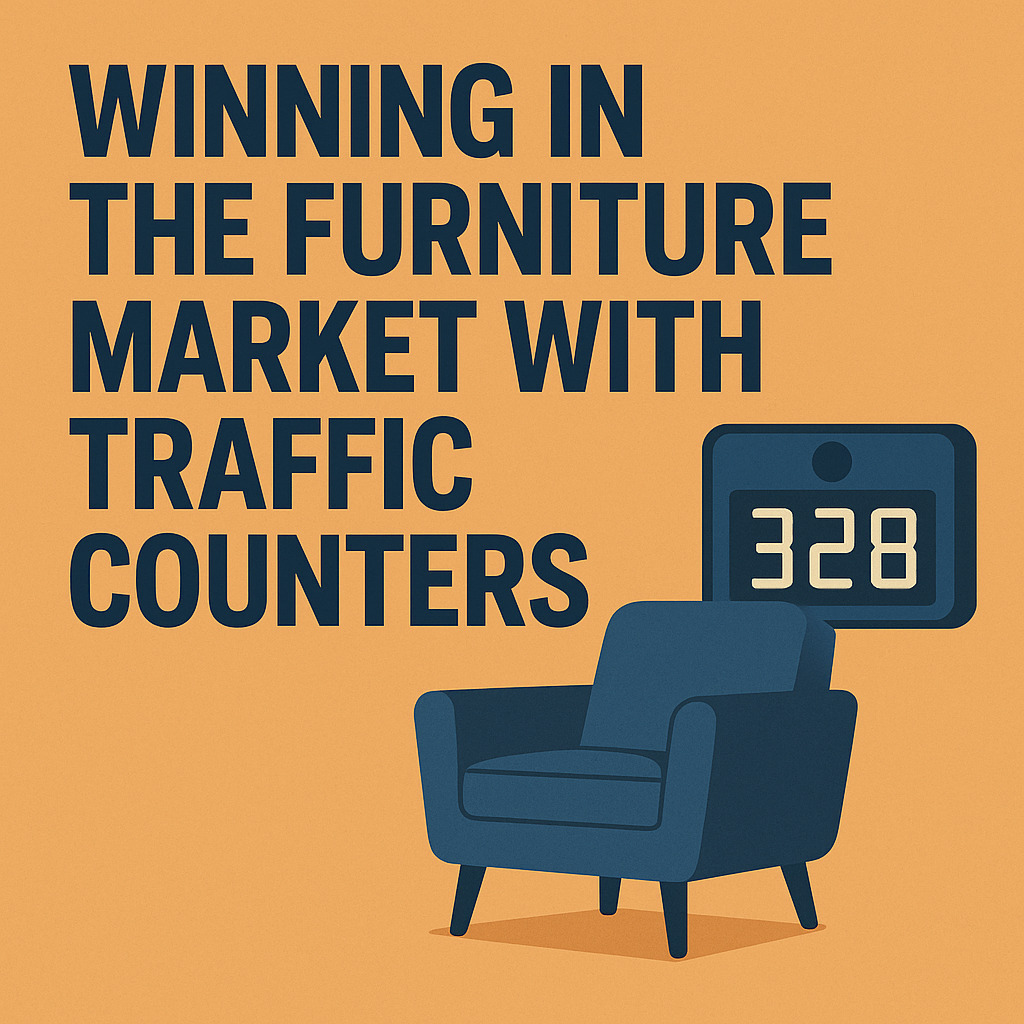The furniture business is competitive, and success takes more than great products. To really thrive, retailers need to understand their customers, optimize operations, and make smart, data-driven decisions. One tool that can help do all of this—and more—is the traffic counter.
These devices track how many people visit your store, and when used strategically, they can become a game-changer for sales, staffing, marketing, and overall growth.
1. Know Who’s Coming In—and When
Traffic counters give you accurate data on how many people walk into your store each day. More importantly, they show you the patterns:
● What days are busiest?
● What time do customers typically shop?
● Which seasons bring the most foot traffic?
With this information, you can plan more effectively—whether it’s adjusting store hours, preparing for busy weekends, or launching a sale at the right moment.
2. Turn Visitors into Buyers
Just because someone walks through the door doesn’t mean they’ll make a purchase. By comparing your visitor numbers with sales data, you can track your conversion rate. This tells you how well your store is turning browsers into customers.
If the numbers don’t add up, it’s a signal to dig deeper. Maybe the store layout isn’t working, or the team needs more training. Traffic counters help identify the gaps so you can fix them and boost performance.
3. Smarter Staffing = Better Service
Furniture shopping often requires more attention and assistance than other retail sectors. With traffic data, you can schedule staff based on real customer flow—not guesses.
This means:
● No more being understaffed during peak times
● Less wasted labor during slow hours
● Better customer service that leads to more sales
The result? Happier shoppers and a more efficient team.
4. Measure Your Marketing Efforts
Is your latest promotion actually bringing people in? Are those social media ads working? With a traffic counter, you can track how your campaigns affect foot traffic.
You’ll see:
● Spikes in visitors after a new marketing push
● Whether in-store events attract more people
● Which promotions drive real interest—not just clicks
This lets you fine-tune your strategy and get the most out of your marketing budget.
5. Improve Store Layout and Product Displays
Understanding where customers go once they’re inside is just as important as knowing when they arrive. Some advanced traffic counter systems include heatmaps or zone tracking, showing which parts of your showroom get the most attention.
This helps you:
● Place popular items in high-traffic areas
● Move overlooked products to more visible spots
● Design a better flow that keeps shoppers engaged longer
In a furniture store, where layout is key, these small changes can lead to big results.
6. Compare Stores and Grow Smarter
If you have more than one store, traffic data can help you understand what’s working where—and why. You can benchmark each location’s performance, see which ones pull in more visitors, and replicate successful strategies across the board.
It’s a great way to guide expansion, marketing, and management decisions as your business grows.
The TraxSales Difference
In the modern furniture market, success comes from knowing your numbers as well as you know your products. Traffic counters help you track, measure, and improve every part of the customer journey—from the moment someone steps inside to the final sale.
They’re more than just a device at the door—they’re a smart investment that can unlock better decisions, smoother operations, and stronger sales. If you want to grow your furniture business with confidence, it’s time to put traffic data to work. With Traxsales you are given the tools to help monitor traffic and collect data that will help your data work for you. Book a demo with our President of Sales, Spencer Mink today! Call directly at 330-319-1445 or schedule online.


